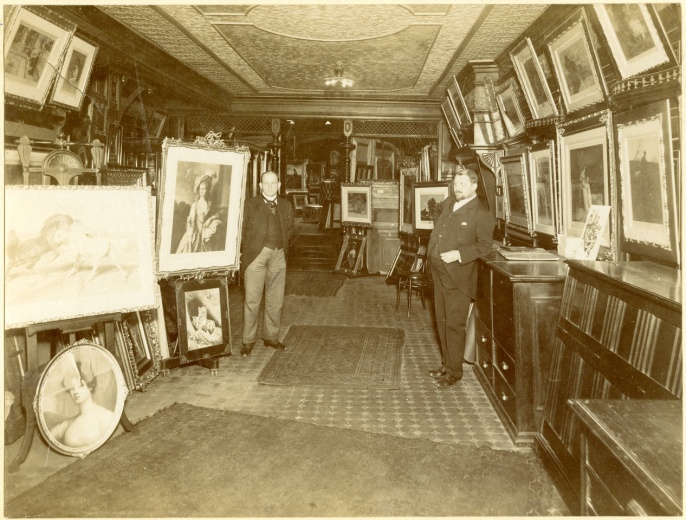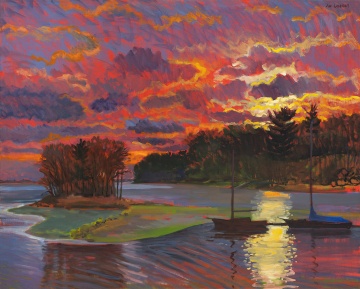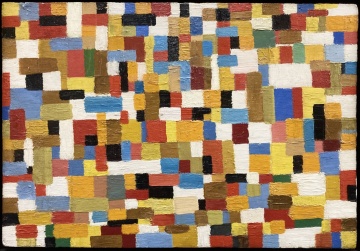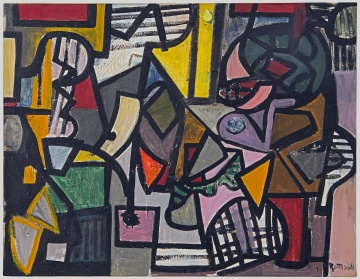Kraushaar Galleries
15 East 71st Street, Suite 2B
New York, NY 10021
Appointment Recommended
212 288 2558
New York, NY 10021
Appointment Recommended
212 288 2558
Kraushaar Galleries celebrates its 140th anniversary in 2025, an historical milestone reached by very few in this highly competitive business. Its chronicle represents an important history of American art regarding the artists they represented, and the people and institutions who purchased their work.
Kraushaar has long connections with the urban realism of The Eight, the result of its many years of representing the work of George Luks, John Sloan, William Glackens, and Maurice Prendergast. Artists who shared their commitment to American realism were also handled by the gallery, including Guy Pène du Bois and Gifford Beal.
But Kraushaar had equally significant connections to American modern art. For instance, it was Kraushaar who brokered the sale of Charles Demuth’s iconic painting My Egypt (1927) to Juliana Force for the Whitney Museum of American Art in 1931. The gallery had established a fluid and cordial relationship with Demuth’s primary dealer, Alfred Stieglitz, and for more than twenty years made steady sales of the artist’s work.
The many artists whose work Kraushaar has sold represented a broad definition of modernism. With some, the gallery maintained relationships of thirty, forty, and fifty years; these continued with succeeding generations of the artist’s families. For John Sloan and Gifford Beal, the gallery has been involved with each their work for nearly one-hundred years, working with their estates for a longer period of time than when the artists were alive. Such loyalty on both sides is remarkable.
Artists Represented:
Gifford Beal
Catherine Drabkin
William Glackens
Leon Goldin
John Heliker
William Kienbusch
Karl Schrag
John Sloan
Lee Walton
Works Available By:
George Ault
Thomas Anshutz
Peggy Bacon
Romare Bearden
George Wesley Bellows
Thomas Hart Benton
Oscar Bluemner
Ilya Bolotowsky
Byron Browne
Charles E. Burchfield
Ralston Crawford
Arthur B. Davies
Stuart Davis
Dorothy Dehner
Charles Demuth
Edwin Dickinson
Preston Dickinson
Burgoyne Diller
Arthur Dove
Guy Pène du Bois
Albert Gallatin
Balcomb Greene
Robert Gwathmey
Marsden Hartley
Charles Hawthorne
Robert Henri
Carl Holty
Edward Hopper
Gwen John
Paul Kelpe
Rockwell Kent
John Koch
Walt Kuhn
Robert Kulicke
Yasuo Kuniyoshi
Gaston Lachaise
John La Farge
Robert Laurent
Jacob Lawrence
Ernest Lawson
Blanche Lazzell
Doris Lee
George Luks
John Marin
Reginald Marsh
Jan Matulka
Alfred Maurer
George L.K. Morris
Hilda Morris
Walter Murch
Ethel Myers
Jerome Myers
Elie Nadelman
Georgia O’Keeffe
Irene Rice Pereira
Charles Prendergast
Maurice Prendergast
George Rickey
Theodore Robinson
Anne Ryan
Karl Schrag
Charles Green Shaw
Charles Sheeler
Everett Shinn
Esphyr Slobodkina
Niles Spencer
Theodoros Stamos
Joseph Stella
John Storrs
Vaclav Vytlacil
Abraham Walkowitz
Max Weber
John von Wicht
Marguerite Zorach
William Zorach

C.W. Kraushaar and John Kraushaar, c. 1900
Group Show
Small Good Things: Still A Small Selection of Small Still Lifes
September 17, 2025 - October 30, 2025
A small selection of small still lifes by Milton Aver, Catherine Drabkin, William Glackens, John Koch, Dan McCleary, Susan Tunick
a selection of 20th century and contemporary women artists
whatever pieces come your way
September 9, 2024 - October 18, 2024
The title for our fall 2024 exhibition comes from a quote by Virginia Woolf. It seems especially fitting as the show features works by women artists. Selected from our inventory, new, familiar and unexpected examples, the relationship between the pieces is lively and touches on the many media women use to make art.
We begin with Marguerite Zorach’s 1910 fauve painting of India and end with two recent, intimate papier collé, a reconstructed collagraph by Catherine Drabkin and Dora Somosi’s assemblage of her own photography. For the century in between we will feature paintings by Laurie Fendrich, Judith Rothschild, Esphyr Slobodkina and Marissa Alperin’s painting in wool. Ethel Myers’ small but heroic bronze portrait of Florence Reed contrasts with the delicate multimedia cake by Pat Lasch and the tactile ceramic from Susan Tunick. In the Graphics Gallery Peggy Bacon’s bowl of fruit compliments Judith Belzer’s lines that seem to echo the tide, and the tactile drawings of Dorothy Hood and Sara Sosnowy. Other artists included are Jay DeFeo, Dorothy Dehner, Anne Ryan, Katherine Wall and Joan Waltemath.
Group Exhibition
Papier
February 1, 2024 - March 15, 2024
Papier
abstract watercolor with shapes that are rounded and organic on a white bottom that looks like a crumpled sheet
Our new exhibition has begun!
Papier is a diverse selection of works on paper. From the graphic self portrait of Karl Schrag to the subtle forms of Arthur Dove, from the dancing lines of Dorothy Dehner to the dancing forms of Byron Browne and John Ferren, the lyricism of Dorothy Hood and Leon Goldin contrasts with the rectilinear compositions from Alfred Leslie and William Kienbusch.
In the graphics gallery we present ew York City as seen by William Glackens, John Sloan, Steve Wheeler and Mildred Williams.

 Back to all Member Galleries
Back to all Member Galleries




